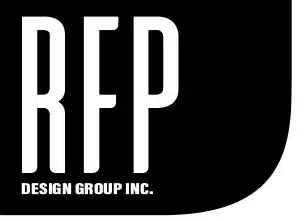Grocery Store Fixtures Displays
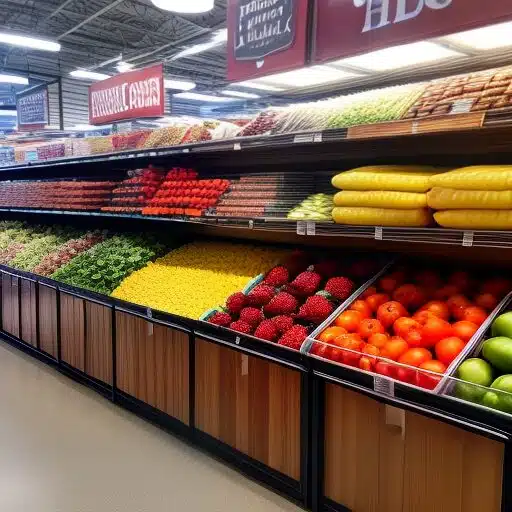
RFP DESIGN GROUP INC. is the go-to expert for crafting captivating grocery store fixtures displays. Our team of skilled and experienced professionals offers a diverse range of services that cover all aspects of design, from concept to execution. With expertise spanning various industries, including architecture, interior design, commercial, and retail showroom design, we are dedicated to delivering exceptional custom grocery store fixtures displays. Throughout the entire design process, we maintain open lines of communication with our clients, ensuring their vision is brought to life with precision. Trust us to elevate your grocery store display with captivating grocery store fixtures displays.
Dedicated Experts
Our dedicated design experts work with you one-on-one to find the right custom upholstery for your project.
Decades of Experience
RFP Design Group Inc., an esteemed leader in turning visions into requests and requests into reality, brings over 200 years combined experience to the table.
White Glove Support
Trust us to handle every detail with excellence. Contact us today to indulge in luxury support and see your dreams materialize.
Industry Leading Tools
Our in-house technology allows us to achieve intricate details and complex forms that traditional methods can't match. Experience a level of customization and quality you won't find anywhere else.
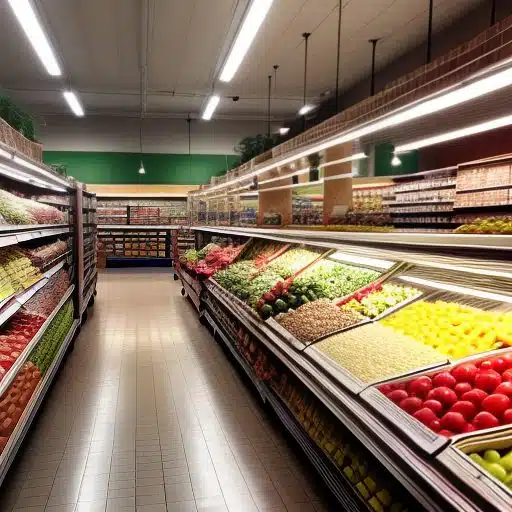
Grocery Store Displays
Transform your grocery store with our innovative grocery store fixtures displays. Our store displays are more than just shelves; they are the key to creating a captivating shopping experience. From modern wall-mounted shelving to eye-catching display cases, each grocery store fixtures displays is expertly designed to showcase your products and tell your brand’s unique story. Elevate your retail environment with our custom grocery store display solutions today!
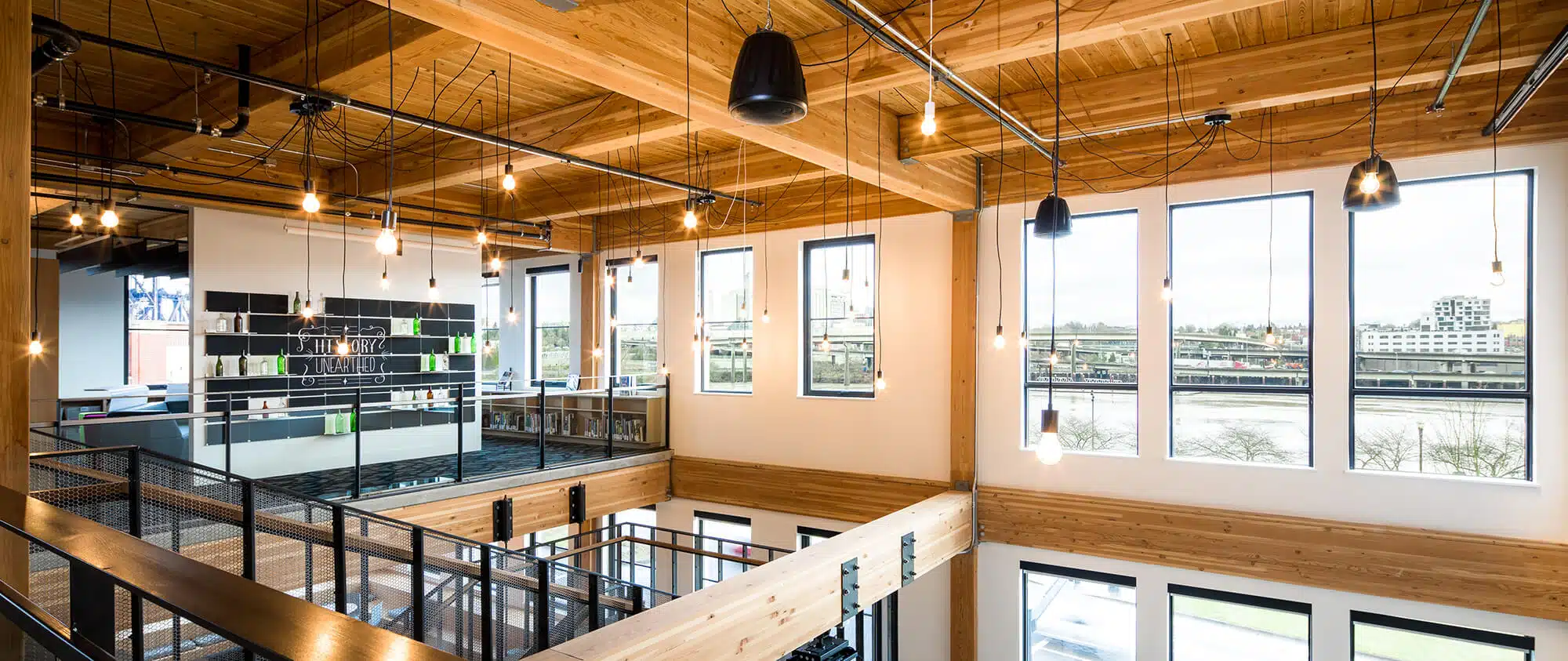
Industry Trends
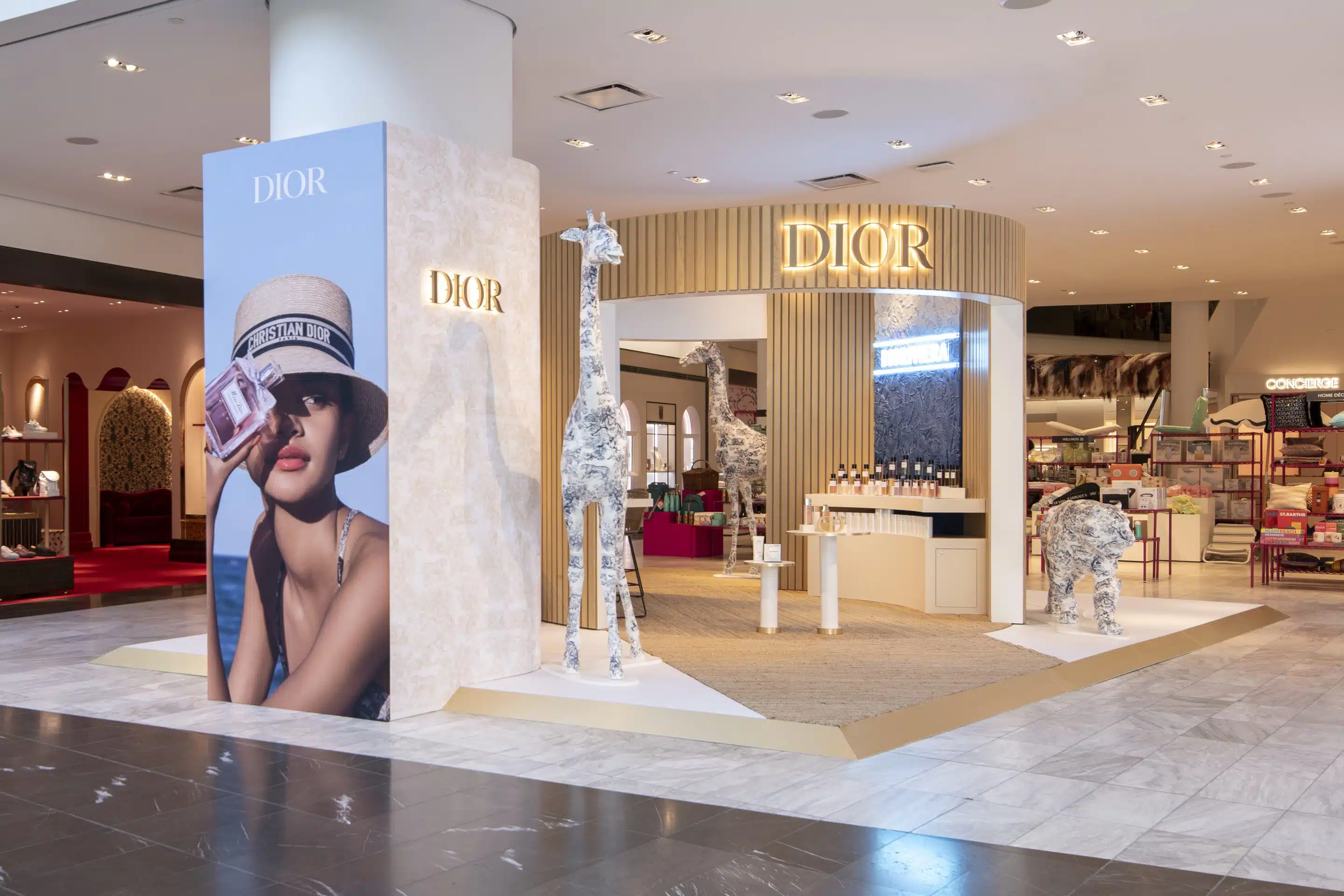
Retail Store Displays
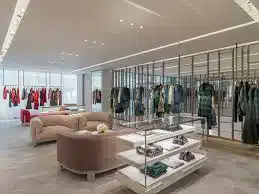
Shaping Customer Interaction
What are grocery store fixtures displays?
Grocery store fixture displays refer to the various structures and units within a grocery store specifically designed to showcase and organize products for sale. These fixtures are essential for creating an efficient and visually appealing shopping environment. Common grocery store fixture displays include:
- Shelving Units: Adjustable shelves or gondola shelving used to organize and display a wide range of grocery products, from canned goods to packaged items.
- End Caps: Displays located at the end of aisles, often used for promotional or seasonal items to attract customer attention and encourage impulse purchases.
- Produce Displays: Designed to showcase fresh fruits and vegetables, these displays typically include bins, shelves, and refrigerated sections to maintain product freshness.
- Refrigerated Displays: Specifically designed for perishable items like dairy, meat, and deli products, these fixtures maintain the required temperature to ensure product quality.
- Checkout Counters: The area where customers complete their purchases, often featuring small displays for last-minute impulse buys, snacks, or magazines.
- Bulk Bins: Containers for loose items such as grains, nuts, or candy, allowing customers to scoop and purchase products in the desired quantity.
- Aisle Markers: Signage indicating product categories and aisle numbers to help customers navigate the store efficiently.
- Freezer Cases: Displays with glass doors for frozen food items, maintaining a low temperature to preserve product integrity.
- Bakery Displays: Shelving and cases for displaying freshly baked goods, such as bread, pastries, and cakes.
These fixtures are strategically arranged to optimize traffic flow, enhance product visibility, and create an organized and aesthetically pleasing shopping experience for customers in grocery stores. Effective grocery store fixture displays contribute to increased sales and customer satisfaction by making it easier for shoppers to find and select the items they need.
What are the benefits of a grocery store fixture display?
- Enhanced Product Visibility: Well-designed fixture displays ensure that products are prominently showcased, making it easier for customers to locate items and discover new products. This increased visibility can lead to higher sales for featured or promoted items.
- Organized Shopping Environment: Grocery store fixtures help organize products in a systematic manner, making it convenient for customers to navigate through the aisles. This organization reduces confusion, streamlines the shopping process, and enhances overall customer satisfaction.
- Promotion and Marketing Opportunities: Fixture displays, particularly end caps and promotional sections, provide opportunities for showcasing special offers, seasonal items, or new product launches. This strategic placement can attract attention and drive impulse purchases.
- Optimized Space Utilization: Efficiently designed fixtures maximize the use of available space, allowing for a broader product selection without overcrowding aisles. This ensures a comfortable shopping experience and encourages customers to explore more of the store.
- Brand Image and Consistency: Consistent and aesthetically pleasing fixture displays contribute to a cohesive brand image. A well-designed store environment reinforces the brand’s identity and can leave a positive and lasting impression on customers.
- Improved Customer Experience: Easy navigation, clear aisle markers, and well-organized displays contribute to a positive and stress-free shopping experience. Customers are more likely to enjoy their time in the store, leading to repeat visits and increased loyalty.
- Increased Sales and Revenue: By strategically placing high-margin or promotional items in visible locations, grocery store fixture displays can significantly impact sales and revenue. The strategic arrangement encourages customers to make additional purchases beyond their initial shopping list.
- Flexibility for Seasonal Changes: Adjustable fixtures and versatile displays allow for easy adaptation to seasonal changes, promotions, or shifts in product demand. This flexibility ensures that the store remains dynamic and relevant to changing customer needs.
- Efficient Restocking and Inventory Management: Well-designed fixtures facilitate efficient restocking and inventory management. This not only ensures that shelves are adequately stocked but also helps reduce instances of out-of-stock items, improving customer satisfaction.
In summary, grocery store fixture displays play a crucial role in creating an organized, visually appealing, and customer-friendly shopping environment. These displays contribute to increased sales, brand consistency, and overall customer satisfaction, making them a valuable investment for retailers in the grocery industry.
What is the best way to display grocery items?
- Keep it Neat and Organized:
- Ensure that shelves and displays are neat and well-organized.
- Group similar items together for easy navigation, and use clear signage or aisle markers.
- Strategic Product Placement:
- Place high-demand or popular items at eye level to maximize visibility and accessibility.
- Reserve prime locations, such as end caps and aisle entrances, for promotions or featured products.
- Create Visual Interest:
- Use attractive and consistent signage to highlight promotions, discounts, or new arrivals.
- Implement creative and visually appealing displays to capture customer attention.
- Consider Seasonal Changes:
- Adjust displays to align with seasonal changes, holidays, or specific themes.
- Highlight seasonal items and promotions to capitalize on customer interest during relevant times of the year.
- Balance Stock Levels:
- Regularly monitor and restock shelves to avoid empty spaces or disorganized displays.
- Keep an optimal balance of stock to ensure that shelves appear well-stocked without overcrowding.
- Utilize Cross-Merchandising:
- Pair complementary items together to encourage cross-selling.
- For example, display pasta and pasta sauce together, or crackers near the cheese section.
- Implement Vertical Displays:
- Use vertical displays, such as end-cap towers or freestanding displays, to maximize limited floor space.
- These displays can showcase a variety of products and create visual interest.
- Highlight Freshness:
- Ensure that perishable items like fruits, vegetables, and bakery goods are displayed in a way that emphasizes freshness.
- Use refrigerated or well-ventilated displays for items that require temperature control.
- Utilize Technology:
- Implement digital signage or interactive displays to provide information about products, promotions, or recipes.
- QR codes can be used for customers to access additional product details or promotions using their smartphones.
- Customer Convenience:
- Place essential and frequently purchased items in easily accessible locations.
- Use shopping carts and baskets strategically to encourage larger purchases.
- Regularly Update Displays:
- Rotate and update displays regularly to keep the shopping environment fresh and encourage repeat visits.
- Highlight new products and promotions to maintain customer interest.
Ultimately, the best way to display grocery items involves a thoughtful combination of organization, creativity, and adaptability. Regularly assess customer preferences, monitor sales data, and seek feedback to refine and optimize the grocery item display strategy for your specific store.
What should you consider when choosing grocery store fixture displays?
- Product Types and Sizes:
- Consider the variety of products you sell and their sizes. Choose fixtures that accommodate different product categories, including bulk items, packaged goods, fresh produce, and more.
- Store Layout and Traffic Flow:
- Analyze the store layout to determine high-traffic areas and strategically place fixtures to guide customers through the store. Ensure easy navigation and accessibility.
- Flexibility and Adjustability:
- Opt for fixtures that are adjustable and adaptable to changes in product assortment or seasonal displays. This flexibility allows for easy reconfiguration based on evolving merchandising needs.
- Durability and Maintenance:
- Select fixtures made from durable materials that can withstand the wear and tear of daily use. Consider ease of maintenance and cleaning to keep displays looking fresh.
- Aesthetic Appeal and Brand Image:
- Choose fixtures that align with the overall aesthetic and brand image of the store. Consistent design elements contribute to a cohesive and visually appealing environment.
- Lighting Options:
- Evaluate lighting options for fixtures to enhance product visibility. Proper lighting can draw attention to specific items and create an inviting atmosphere.
- Accessibility for Customers:
- Ensure that fixtures are designed for customer convenience, with easy access to products and clear visibility of labels. Consider the height of shelves, especially for reaching products on higher levels.
- Space Optimization:
- Maximize the use of available space by selecting fixtures that efficiently organize products without overcrowding. Create a balance between showcasing a diverse range of items and preventing clutter.
- Technology Integration:
- Assess the potential for integrating technology into fixtures, such as digital signage or interactive displays. Technology can enhance the customer experience and provide additional information about products.
- Budget Considerations:
- Evaluate the budget for fixtures, considering both upfront costs and long-term durability. Balance the need for quality with cost-effectiveness to ensure a sound investment.
- Compliance and Safety:
- Ensure that fixtures comply with safety standards and regulations. Consider factors such as weight-bearing capacity, stability, and proper anchoring to prevent accidents.
- Brand Flexibility:
- If the store carries multiple brands or frequently changes product displays, choose fixtures that can accommodate various branding styles and adapt to different merchandising strategies.
- Customer Engagement Opportunities:
- Look for fixtures that provide opportunities for customer engagement, such as sampling stations, interactive displays, or informational signage.
- Supplier Support:
- Consider the availability of support and maintenance services from the fixture supplier. A reliable supplier can assist with repairs, replacements, or modifications when needed.
By carefully considering these factors, retailers can choose grocery store fixture displays that enhance the overall shopping experience, contribute to increased sales, and align with the goals and branding of the store.
Are the grocery store fixture displays customizable?
- Size and Configuration:
- Fixtures can be customized in terms of size and configuration to fit the available space and accommodate the specific layout of the store.
- Shelving Adjustability:
- Adjustable shelving allows for flexibility in displaying different product sizes and types. Retailers can modify the shelf heights to accommodate varying merchandise.
- Materials and Finishes:
- The materials used for fixtures, as well as their finishes, can be customized to align with the store’s branding and overall design aesthetic.
- Branding Elements:
- Incorporating branding elements into the fixture design, such as logos, colors, and signage, ensures a consistent and cohesive look that reflects the store’s identity.
- Lighting Options:
- Customizable lighting features, such as LED strips or spotlights, can be integrated into fixtures to enhance product visibility and create a specific ambiance.
- Technology Integration:
- For stores looking to incorporate technology, fixtures can be customized to include interactive displays, digital signage, or charging stations, aligning with the store’s technological goals.
- Modularity:
- Modular fixtures allow for easy reconfiguration and adaptation to changing product assortments, seasonal displays, or promotional layouts.
- Specialty Displays:
- Stores with specific needs, such as those selling specialty or unique products, can request custom displays designed to showcase these items effectively.
- Accessibility Features:
- Customization can include features to enhance accessibility, such as ramps, lower shelves, or other accommodations to ensure that all customers can easily reach and view products.
- Security Features:
- Customized fixtures can incorporate security features such as locking mechanisms, alarms, or anti-theft devices to protect high-value or sensitive items.
- Customer Interaction Elements:
- Stores aiming to provide unique customer experiences can customize fixtures to include elements like sampling stations, product demonstration areas, or touchscreen displays.
- Multi-Brand Displays:
- For stores carrying multiple brands, fixtures can be designed to accommodate a variety of branding styles, ensuring a cohesive look while allowing each brand to stand out.
While customization options may vary depending on the fixture supplier, many manufacturers offer a degree of flexibility to tailor displays to the specific needs and preferences of individual retailers. Customized grocery store fixture displays contribute to a distinctive and branded shopping environment, fostering a positive and memorable customer experience.
